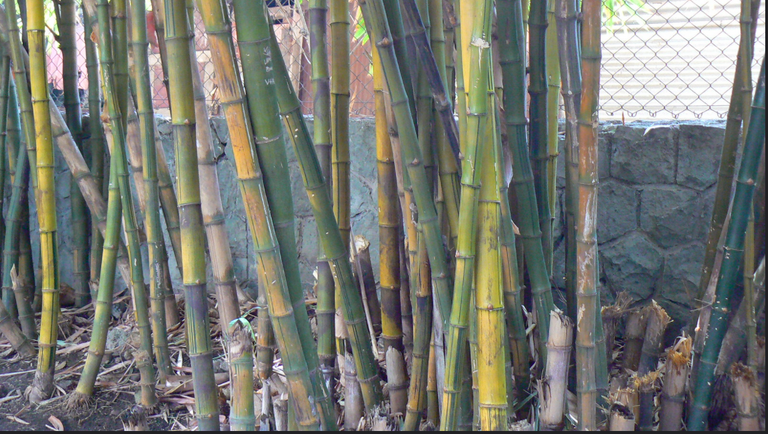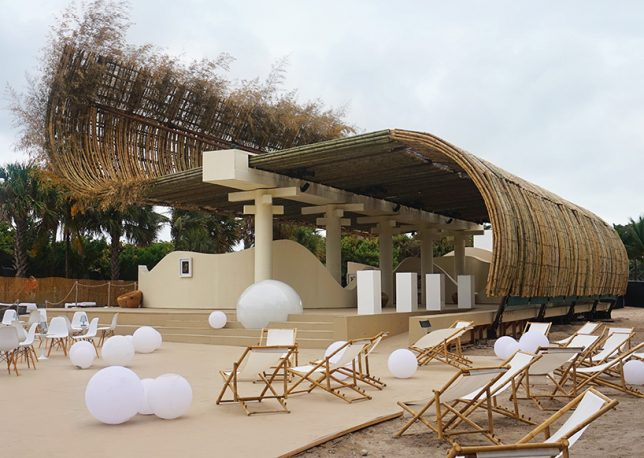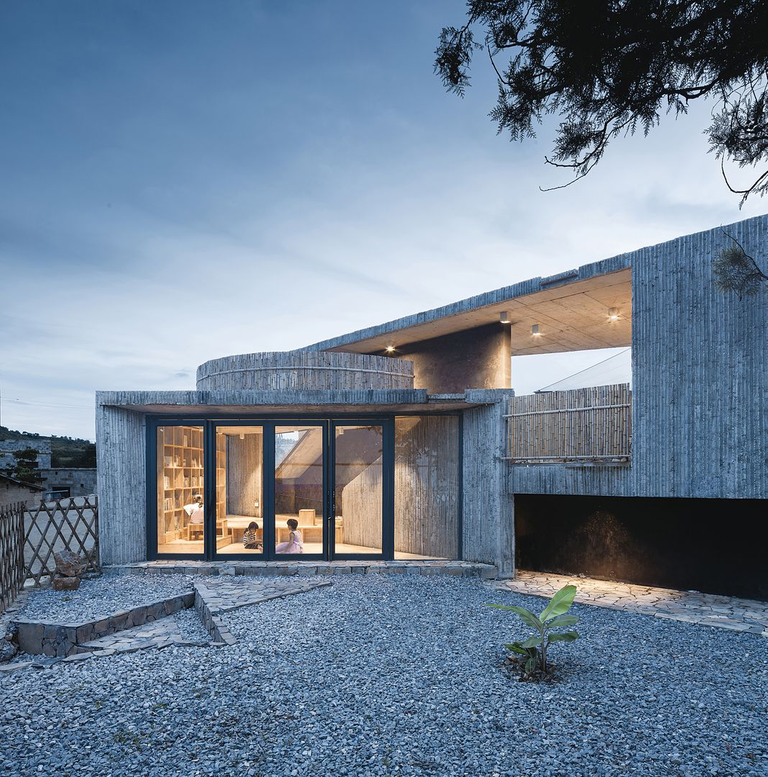Bamboo as a reinforcer of buildings

The current inflation in Nigeria has hit the construction industry the most with building materials at a disproportionately all-time high as compared to other materials. I happen to know this because of my recent involvement in a friend's building project. Starting from the substructures of a building where the bulk of the materials needed are cement, granites, and sand: the cost of cement has more than doubled while sand and granites have increased by more than 50% within the last year.
Some substructures require iron reinforcements depending on the kind of building being constructed. Those that do not require iron reinforcements from the substructure levels will definitely require it at the superstructure level, especially when buildings get to the lintel level.
While there may not seem to be viable alternatives to cement, sand, and granites on the horizon as far as the construction industry is concerned, a particular plant, the bamboo, may have all the characteristics necessary to function as a reinforcer of buildings in place of irons, although may not be as strong.

Bamboo, scientifically known as Bambusa vulgaris, belongs to a family of flowering plants known as Poaceae - the same family as grasses. It is believed to be native to IndoChina. However, it is now found growing virtually all around the tropical and sub-tropical ecosystems. Growing up in the thick of the lowland rainforest, the bamboo plant is a common sight in areas close to water sources. Occasionally, clumps of the plant are also seen on uplands.
Bambusa vulgaris hardly grow solitarily. They form clumps that keep increasing in surface area as the clump ages with the addition of new individual plants. This means that a typical bamboo clump consists of individual bamboo plants of different ages. Thus, the primary mode of reproduction is vegetative vis a vis.
Individual bamboo plants grow upright primarily although might end up bending as their heights continue to battle with the force of gravity. The stem, which can be as high as 20 meters, grows as culms - an above-the-ground stem typical of grasses with prominent nodes and hollow internodes. The stem is green and glossy when alive and yellowish-brown when dead. The leaves are grass-likes.
Personally, I have never seen a bamboo plant flowering or fruiting. Research, however, has it that the bamboo plants do indeed flower but at a high level of irregularity. They are known to sometimes stay several decades in vegetative phase and then bring out flowers all of a sudden. Unfortunately, the onset of flowering in bamboos has been reported to also be the onset of their deaths. In other words, sexual propagation of bamboo plants remains very limited while asexual propagation has been leading the way all along.
The bamboo stem is quite resilient despite the hollowness of its internodes. Throughout world history, it is utilized as a supportive structure for buildings, especially in fresh forms when newly harvested. The common thing around here when decking a house is to use freshly harvested bamboo plants as the supportive base on which the casting is made. Aside from this, the stem of the plant is popular in constructing mud huts in rural areas.

The stems of bamboo remain the major component of scaffolding in Nigeria There are modern-day architectural edifices that have made use of bamboo even beyond the shores of the country as well.
Apart from its uses as building reinforcer, bamboos serve different other uses ranging from the edibility of the young shoot, paper and pulp production, source of fuel, and so on.
With all these important uses, one would expect that major researches into the plant should have been carried out, or should be ongoing, at least. There are calls from numerous quarters for bamboos to be domesticated on a large scale. Perhaps the plant can become our go-to alternative for irons when we run out of deposits.
Thank you all for reading.
Bamboo is an extraordinary building material - there's been some incredible constructions that really show it's capabilities. I know that many associate it with poverty as that's the ONLY building material accessible to many, but truth is it's durable, strong and environmentally sustainable.
We too have a rise in the cost of buillding materials, particularly timber. Makes me want to NOT build a house - we were thinking of buying land and building soon but that could be a reason in the 'con' side of the table.
All the major timber species around here have been immaturely harvested. Non-timber species are now being used to generate woods for construction purposes. Bamboo has a huge potential and I am here wondering why all attention is yet to be on it. I do not think its cultivation will be difficult too. Might even do a bit of research on that.
People find it hard to change their thinking, plus I think you need to treat it in particular ways andmaybe people just dont understand it? Bali has been a bit of a leader in that area I think...
https://twitter.com/gentleshaid/status/1467227453781331971
The rewards earned on this comment will go directly to the person sharing the post on Twitter as long as they are registered with @poshtoken. Sign up at https://hiveposh.com.
My father planted lots of bamboos, I noticed that they are very easy to propagate (but it takes time). And you are right, bamboo has lots of uses, the young shoots are very edible and you can pretty much create almost anything using bamboo.
Bamboo propagation is something I would love to research and probably invest in here. Sounds like an interesting hobby one can engage in
It is indeed interesting and it will be more interesting once you can harvest them.
Thanks for your contribution to the STEMsocial community. Feel free to join us on discord to get to know the rest of us!
Please consider delegating to the @stemsocial account (80% of the curation rewards are returned).
Please consider including @stemsocial as a beneficiary to get a stronger support.
I had the chance to visit the Arashiyama Bamboo Grove a few years ago (when I was still touring the world ;) ). This was a really impressive bamboo forest, super tall and quite dense at the end of the day. I however guess that there is no way those bamboos could ever be used for construction ;)
Just googled the Arashiyama Bamboo Grove to have a view of what it is all about and what a sight to behold. No one in their right senses would want to remove such an ecological aesthetic for construction's sake.
I fully agree!
Well done @gentleshaid! We're happy to inform you that this publication was specially curated and awarded RUNNER-UP in Architecture Brew #50. Congratulations!
Subscribe to Architecture+Design, an OCD incubated community on the Hive blockchain.